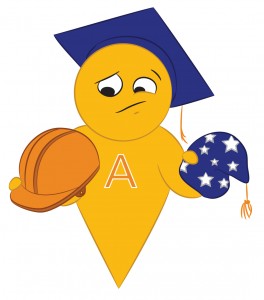How to Pick the Right Athletic Scholarship Opportunity

The key to having a successful recruiting process is to be organized and to have a plan. The fundamentals of any good college recruiting experience are to have a list of schools you are interested in.
This list of schools should start with approximately 30–50 schools and be divided into two categories: (1) your dream schools and (2) your safety schools. You want approximately 25 percent of the schools to be safety schools and 75 percent to be dream schools.
What Is a Dream School?
Dream schools are schools that you want to go to but will need help financially, academically, or athletically to qualify. For example, you might be interested in playing baseball for Stanford. You have the athletic ability and academically you have a grade point average (GPA) of 3.8 and scored very well on the SAT. However, you can’t afford the tuition at Stanford and will need at least a 50 percent scholarship. You would list Stanford as a dream school because getting a 50 percent scholarship as a true freshman in baseball is going to be very difficult.
The Most Common Reasons You Would List a School As a Dream School Are as Follows:
1. You Aren’t Ready Athletically to Play at the Division Level
Maybe you are a solid Division II athlete and want to attend a couple of Division I programs or you are a late bloomer, and although you could use a few years at a junior college, you are interested in going straight to a four-year university.
2. You Are Going to Need Help Because Your GPA or Test Scores Are a a Little Low
Don’t assume that just because you are a good athlete, a coach can work miracles with the admissions office to get you in. If you have an outside chance of getting into a school academically, list that school on your dream list.
3. You Can’t Afford the Tuition of a School Unless You Get a Significant Scholarship
This is a very common situation for athletes looking to attend out-of-state or private universities. If you play a sport where full-ride scholarships are rare and you aren’t sure if the coach will be offering you a scholarship, list that school on your dream list.
What Is a Safety School?
Safety schools are schools that you feel very confident you will be accepted and will be able to play sports there. These schools are good to have as options in case you are not able to get into your dream schools. For example, you might be a very good local basketball player with average grades. Although you would like to attend a school like the University of California, Berkeley and athletically you might be able to make the team, your academics could hold you back. It is important you are engaged with schools at the Division II or the National Association of Intercollegiate Athletes level where you know you stand a much better chance of getting in.
The Three Points to Check with a School in Order to Make Sure it is a Good Choice as a Safety School Are as Follows:
1. Make sure you meet the academic qualifications to get into the school even if you are not an athlete.
2. Get an honest third-party assessment about your ability to play at that particular school. As a word of advice, very few high school athletes would be ready to play at the NCAA Division I level right away. Generally, a good safety school is at the Division II, Division III, or junior college level.
3. Would you be able to afford the tuition and full cost of living without receiving any financial aid from an athletic scholarship? If you can afford the school through loans, grants, or just paying out of pocket, then it can qualify as a safety school.
Putting the List Together
It can be very difficult to know what you want in a college especially if you are starting the recruiting process of your freshman or sophomore year like you should. A few things you can do to make sure you get off to the right start are as follows:
- Speak with our team and get a recruiting evaluation. We have helped thousands of athletes in the recruiting process and can give you a head start when you are trying to identify what division level might be right for you.
- Start with a larger list as a freshman and pare it down as you understand more of what you want. It’s okay to have a list of fifty schools early in the process because you will be removing names as you learn more about them.
- You can always change your mind. At the end of the day, you are free to change your mind about a school and what you want. Don’t feel any pressure to stick to your list if what you want in a school changes as you learn about each program.
Are you having a difficult time putting together a school list? Leave your questions in the comments section below or ask us on Facebook, Twitter, and Google+!
Find opportunities for athletic scholarships and get connected to college coaches.
